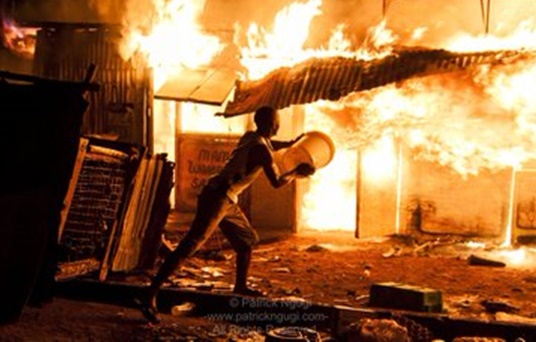Emergency response and disaster management can save dozens of lives when executed in a timely and professional manner. Unfortunately, this is not always the case in Kenya, especially in view of how recent disasters have been handled. Yesterday night, Kijiji area of Langata suffered a fire tragedy that could have been well quelled before it could deal extensive damage.

However, the fire engines that raced to the scene did not have enough water; rendering them useless.
Residents had to resort to use crude tools such as buckets, basins, soil etc; an exercise that proved futile given the intensity of the flame.
At the end of it all, 3 lives and property of unknown value has been lost.
Kenyans were left wondering what happened to the fire engines Governor Mike Sonko and President Kenyatta launched, promising swift response to fire tragedies.
Ineptitude in responding to and combating the Lang’ata fire tragedy is reminiscent of the Gikomba fire disaster that resulted in losses that ran to hundreds of millions of shillings.
The Lake Nakuru chopper crash is yet another disaster that exposed Kenya’s poor emergency response.
It took six hours of agonizing waiting before divers from Kenya navy arrived at the scene. And when they did, there was no boat to get them to the spot where the chopper had crashed into the lake.
It took more than a month before some bodies could be retrieved while some have not been retrieved up to date – with their families giving up search efforts and resorting to bury banana plants in place of their loved one’s remains.
Critics have pointed out that local and national governments have the capacity to respond to emergency only that bureaucracy and poor governance have taken centre stage.
Kenyans have been quick to compare how the government ably responds to opposition demonstrations and squashes them with questionable force.
[irp]
If only the same force could be channelled to disasters, then certainly we would witness the scale of loss of lives and property being experienced.
Leave a Comment